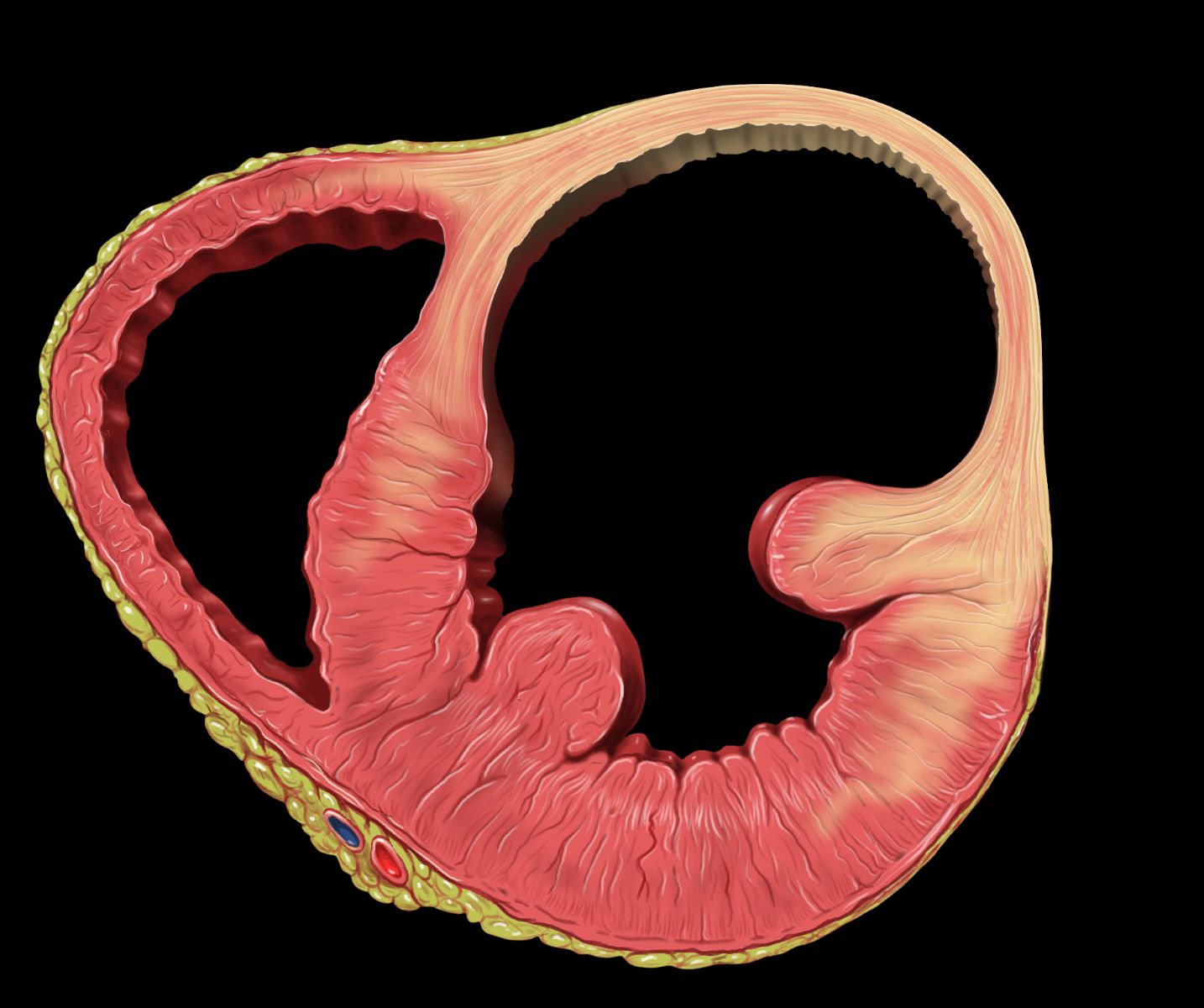
Fetal left ventricular aneurysm is a rare heart condition that can be detected during pregnancy. This condition involves a bulging or ballooning in the wall of the left ventricle, the heart's main pumping chamber. While it might sound alarming, not all cases lead to severe complications. Some aneurysms remain stable and don't affect the baby's health. However, others might require close monitoring or intervention. Understanding this condition is crucial for expecting parents and healthcare providers. This article will provide 30 facts about fetal left ventricular aneurysm, shedding light on its causes, symptoms, diagnosis, and potential treatments. Whether you're a concerned parent or a curious reader, these facts will offer valuable insights into this uncommon but significant heart issue.
Key Takeaways:
- Fetal left ventricular aneurysm is a rare heart condition in unborn babies, detected through prenatal ultrasound. Regular monitoring and early diagnosis are crucial for managing this condition effectively.
- Babies born with a left ventricular aneurysm may need neonatal intensive care, medication, and long-term follow-up with a pediatric cardiologist. Surgery and lifestyle adjustments may also be necessary for their well-being.
What is a Fetal Left Ventricular Aneurysm?
A fetal left ventricular aneurysm is a rare heart condition detected during pregnancy. It involves an abnormal bulging in the wall of the left ventricle of the heart. Understanding this condition can help expectant parents and medical professionals manage it effectively.
- Rare Condition: Fetal left ventricular aneurysms are extremely rare, occurring in less than 1 in 10,000 pregnancies.
- Detection: Typically detected through prenatal ultrasound, which can reveal the abnormal bulge in the heart's left ventricle.
- Size Matters: The size of the aneurysm can vary, influencing the severity and potential complications.
- Causes: The exact cause is often unknown, but it may be related to genetic factors or developmental issues during pregnancy.
- Symptoms: Most fetuses with this condition do not show symptoms before birth, making prenatal diagnosis crucial.
- Associated Conditions: Sometimes linked with other heart defects or genetic syndromes.
- Monitoring: Regular fetal echocardiograms are essential to monitor the aneurysm's size and impact on heart function.
- Treatment Options: Treatment varies; some cases resolve on their own, while others may require medical intervention after birth.
- Surgical Intervention: In severe cases, surgery might be necessary to repair the aneurysm after the baby is born.
- Prognosis: The prognosis depends on the aneurysm's size and associated complications, but many children lead normal lives post-treatment.
How is Fetal Left Ventricular Aneurysm Diagnosed?
Early and accurate diagnosis is key to managing fetal left ventricular aneurysm. Here's how medical professionals identify this condition.
- Prenatal Ultrasound: The primary tool for detecting fetal heart anomalies, including left ventricular aneurysms.
- Fetal Echocardiogram: A detailed ultrasound of the fetal heart, providing a clearer picture of the aneurysm.
- MRI: In some cases, a fetal MRI may be used to get more detailed images of the heart and surrounding structures.
- Genetic Testing: May be recommended to rule out associated genetic conditions.
- Amniocentesis: Sometimes performed to check for chromosomal abnormalities that might be linked to the aneurysm.
- Family History: A thorough review of the family's medical history can provide clues and help in diagnosis.
Potential Complications of Fetal Left Ventricular Aneurysm
Understanding the possible complications can help in preparing for and managing the condition effectively.
- Heart Failure: Large aneurysms can interfere with heart function, potentially leading to heart failure.
- Arrhythmias: Abnormal heart rhythms may develop due to the aneurysm.
- Thromboembolism: Blood clots can form in the aneurysm and travel to other parts of the body, causing serious complications.
- Hydrops Fetalis: A severe condition where fluid accumulates in the fetus's tissues and organs, sometimes linked to heart issues.
- Growth Restriction: The fetus may experience intrauterine growth restriction (IUGR) due to compromised heart function.
- Premature Birth: Complications may lead to early delivery, which carries its own set of risks.
Management and Treatment After Birth
Postnatal care is crucial for babies born with a left ventricular aneurysm. Here's what to expect.
- Neonatal Intensive Care: Many babies will need to spend time in a neonatal intensive care unit (NICU) for close monitoring.
- Medications: Drugs may be prescribed to manage heart function and prevent complications.
- Regular Check-ups: Frequent visits to a pediatric cardiologist are necessary to monitor the aneurysm and overall heart health.
- Surgical Repair: Some infants may require surgery to repair the aneurysm, depending on its size and impact.
- Long-term Monitoring: Lifelong follow-up with a cardiologist is often needed to ensure the heart remains healthy.
- Lifestyle Adjustments: As the child grows, certain lifestyle changes might be recommended to protect heart health.
- Support Groups: Connecting with other families facing similar challenges can provide emotional support and practical advice.
- Research and Advances: Ongoing research aims to improve diagnosis, treatment, and outcomes for children with this condition.
Final Thoughts on Fetal Left Ventricular Aneurysm
Understanding fetal left ventricular aneurysm is crucial for expecting parents and healthcare providers. This rare condition, characterized by a bulging in the heart's left ventricle, can be detected through prenatal ultrasounds. Early detection allows for better planning and management, ensuring the best possible outcomes for both mother and baby.
While the condition might sound alarming, many babies with this diagnosis go on to lead healthy lives. Advances in medical technology and prenatal care have significantly improved the prognosis. Regular monitoring and consultations with a pediatric cardiologist are essential for managing the condition effectively.
Knowledge empowers parents to make informed decisions. Stay proactive, ask questions, and seek support from medical professionals. With the right care and attention, families can navigate this journey with confidence and hope.
Frequently Asked Questions
Was this page helpful?
Our commitment to delivering trustworthy and engaging content is at the heart of what we do. Each fact on our site is contributed by real users like you, bringing a wealth of diverse insights and information. To ensure the highest standards of accuracy and reliability, our dedicated editors meticulously review each submission. This process guarantees that the facts we share are not only fascinating but also credible. Trust in our commitment to quality and authenticity as you explore and learn with us.


